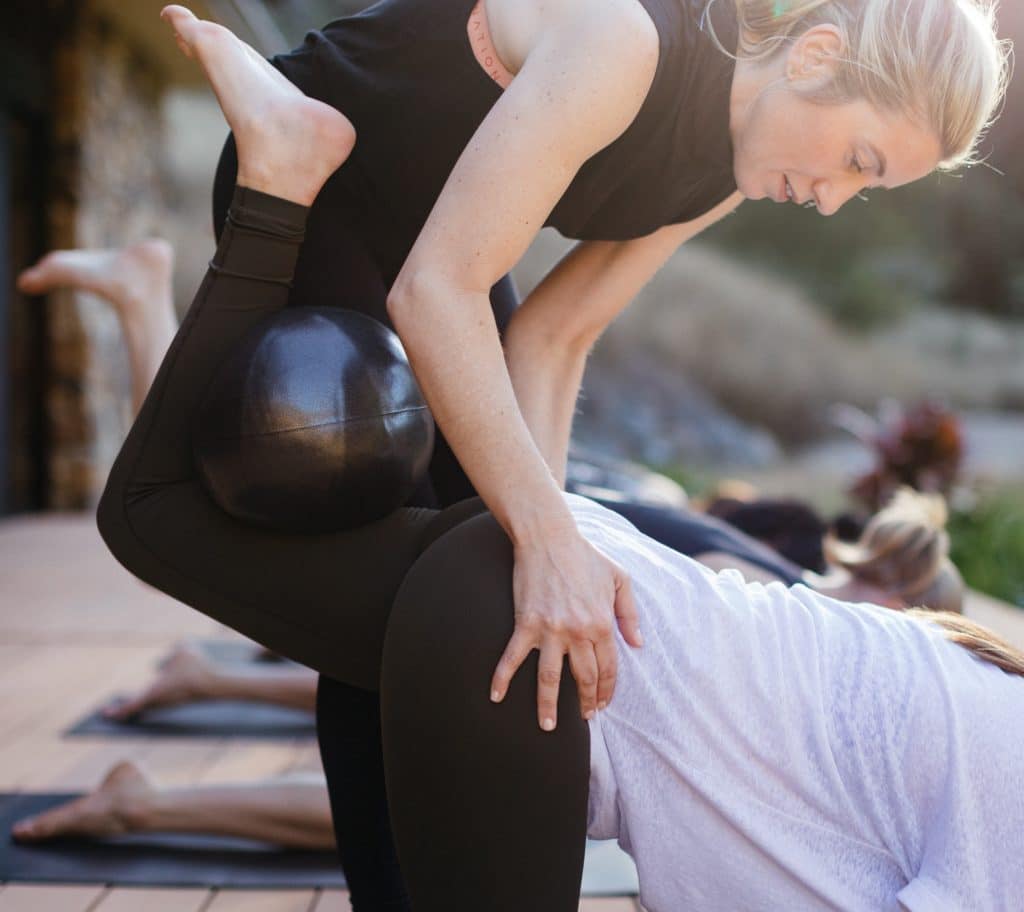The cooler weather is well and truly settling in, making it more and more tempting to give the gym a miss and stay cosy and warm at home. The winter months don’t mean you need to entirely abandon your exercise routine; there are plenty of household items that can be substituted for expensive gym equipment. This is a fantastic option to stay fit and healthy when you’re struggling to muster up the motivation to maintain your regular exercise routine and don’t want to commit to purchasing a home gym setup.
In this article, we list some household items and areas of the home that can be used to add intensity to your home workout. If you’re unsure of where to begin, click here to follow our 30 minute home workout guide. You can adapt these exercises to incorporate the items detailed below for a more challenging workout. We have also included variations of each exercise to suit your fitness level, so it’s achievable for everyone.
Stairs
- Cardio: Whether you’re doing a cardio-based workout or simply warming up, stairs can be a great way to get your blood pumping. You can walk, run, or jump up and down a flight of stairs – choose whatever feels comfortable and manageable for you. Take note – the more you do it, the easier it will become!
Lounge or Chairs
- Tricep dips: You’ll quickly feel the burn in your triceps with this exercise, but it’s fantastic for strengthening and toning. Facing away from the seat, place your hands on the chair or grip the seat with your knuckles facing towards your feet. With your knees bent, heels grounded and bottom hovering near to the seat, bend at the elbows so that they point directly behind you until they reach a 45- to 90-degree angle. Slowly push yourself back up to the starting position and repeat.
- Push-ups: Assume a plank position. Lift and place your feet on the seat for a declined push-up position. This is a more advanced version of the push-up, which is fantastic for strengthening your chest and shoulders. If this isn’t possible, complete a set of 12-15 push-ups from a kneeling position.
- Squats: If you’re new to this exercise, using a seat can be a useful guide to ensure you are squatting low enough (and correctly) to reap the full benefits of the exercise while providing the support you may need if you’re concerned about your balance.
- Single leg step-ups: Step up onto the seat one leg at a time, fully extending the leg that you’re stepping with and lifting the other leg to a 90-degree angle. Alternate between legs.

Walls
- Wall sits: Even if you have no suitable items at your home to use as weights, or surfaces for inclines and declines, everyone will have at least four walls they can use. To complete a wall sit, stand against the wall, ensuring your back is laid flat against the wall. Slide your body down the wall until your legs are at a 90-degree angle and your feet are placed directly below your knees. Think of it as sitting on an invisible chair with perfect posture! Hold for 30 seconds to a minute, or as long as you can.
- Inclined push-ups: Unlike the decline push-ups with the chair, inclined push-ups are an easier alternative that’s a wonderful option to gradually build up strength in your arms. Simply place your hands shoulder-width apart and do a push-up against the wall. The further your feet are away from the wall, the more challenging the exercise will be.
Towels
- Mountain climbers: For a fantastic abdominal workout, get into a push-up plank position (arms fully extended) and place a towel underneath each foot. Slide one foot in until your knee reaches your chest, then as you slide it back out, bring the opposite foot in. Be mindful of keeping your bum down and your back flat and level with the ground to feel the full extent of the exercise.
- Lunges: The same sliding motion can be used for lunges. Instead of stepping one foot back, place a towel underneath and slide it back, bending your knee until it hovers just off the ground. (You’ll need to be on tiles or a wooden floor for this movement). Slide your foot back in as you return to a standing position. Swap legs. This requires greater balance and control, so we suggest mastering the original movement before moving on to the sliding variation.

Backpack
Filling a backpack with various household items creates a weighted vest that can be used in a number of different ways. The wonderful thing about using a backpack is that you can easily adjust how heavy it is and add more weight as you get stronger.
Some household items you can use to fill the backpack include canned foods, books, water bottles and detergent bottles. These items can be used individually as weights as well.
If you’re carrying the backpack strapped to your back, you can use this to add weight to a number of exercises such as:
- Lunges
- Push-ups
- Squats
- Stair climbs
Otherwise, you can grip the straps and use it as a dumbbell as well. This is great for:
- Bicep curls: Gripping the backpack lengthways with both hands, slowly curl the backpack towards your chest. Reverse the movement and repeat.
- Shoulder press: Grip the backpack similarly to the bicep curls, but with your palms facing behind you. Lift the backpack up to your chest, then push upwards and extend your arms straight above your head. Reverse the movement and repeat.
- Overhead tricep extensions: Hold the top loop of the backpack with both hands and extend your arms above your head. Bend your elbows and lower the backpack behind your head, ensuring that your elbows remain pointing forward and don’t swing out to the side. Drive back up through your triceps and fully extend your arms back above your head.
Remember, something is always better than nothing. Even 10 minutes of movement a day can make a difference. Click here to read our article about intermittent exercise and how you can incorporate short bursts of movement into your day.





